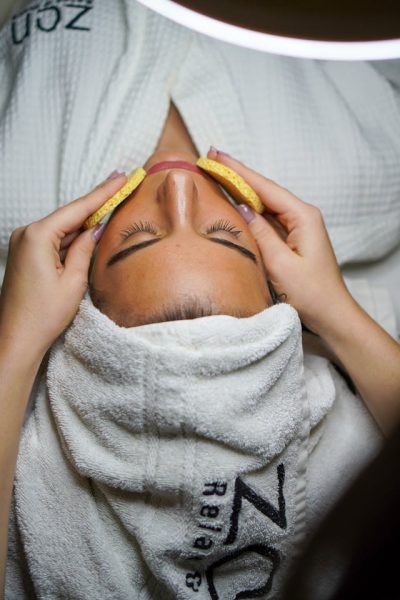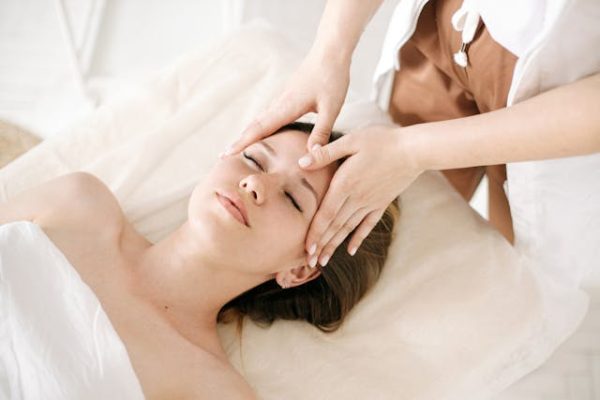Are you ready to say goodbye to dull, tired skin and hello to a fresh, radiant complexion? Chemical peels might just be the magical ticket to achieving that coveted glow. If you’re wondering what all the buzz is about or considering whether a chemical peel is right for you, you’ve come to the right place. I’m diving deep into the world of chemical peels, answering all your burning questions, and demystifying the process so you can make an informed decision with confidence.
Let’s start with the basics. A chemical peel is a skin-resurfacing procedure that uses a solution of varying strengths to exfoliate the outermost layers of your skin. By removing dead skin cells and stimulating new cell growth, a chemical peel reveals smoother, more youthful-looking skin beneath. Think of it as hitting the “refresh” button on your face.
There are three main types of chemical peels:
- Superficial Peels: These are the lightest peels, using mild acids like alpha hydroxy acid (AHA) to gently exfoliate. They’re great for brightening your complexion and evening out skin tone with minimal downtime.
- Medium Peels: Medium peels go a bit deeper, often using trichloroacetic acid (TCA) to address fine lines, wrinkles, and acne scars. You’ll experience more noticeable results, but also a longer recovery time.
- Deep Peels: These are the heavy hitters, using stronger acids like phenol to penetrate deep into the skin. Deep peels can dramatically improve skin texture and reduce severe wrinkles, but they come with significant downtime and require a longer healing process.
Why You Might Need (want) a Chemical Peel
So, why would someone willingly slather acid on their face? The reasons are plentiful! Here’s a quick rundown of some of the most common skin concerns that chemical peels can help address:
- Fine Lines and Wrinkles: As we age, our skin’s natural ability to shed dead cells slows down, leading to a buildup of rough, uneven texture. Chemical peels encourage cell turnover, helping to smooth out fine lines and wrinkles for a more youthful appearance.
- Acne and Acne Scars: Chemical peels can be a game-changer for those struggling with acne. By removing the outer layer of skin, peels can help unclog pores, reduce inflammation, and even out skin tone. They’re also effective at fading post-acne scars over time.
- Hyperpigmentation and Sun Damage: Sun worshippers, take note! Over time, sun exposure can lead to dark spots, freckles, and uneven skin tone. Chemical peels can help lighten these spots and give you a more even, radiant complexion.
- Dullness and Uneven Texture: If your skin has lost its glow or feels rough to the touch, a chemical peel can help slough off those dead skin cells and reveal a brighter, smoother canvas underneath.
Where to Go for a Chemical Peel
Finding the right place to get a chemical peel is crucial to ensuring a safe and effective experience. Here’s where to look:
- Dermatologist’s Office: For a higher level of care and more potent peels, visiting a board-certified dermatologist is your best bet. Dermatologists can assess your skin and recommend the appropriate peel strength for your needs. Plus, if you’re dealing with serious skin concerns like acne scars or deep wrinkles, they have the expertise to handle more intensive treatments.
- Medical Spas: Medspas often offer chemical peels as part of their menu of services. As you know, I’m a huge fan of doing peels at the medspa (I just wait for them to run a special at my favorite spa). These facilities are usually supervised by a medical professional, such as a doctor or nurse practitioner, and their estheticians are trained to perform various skin treatments, including peels. Personally, I have a nurse that I see regularly for skincare like this.
- Licensed Esthetician: For lighter peels or regular maintenance, visiting a licensed esthetician at a reputable spa or salon can be a great option. Just make sure they’re trained and certified to perform chemical peels.
- At-Home Kits: For the DIY enthusiasts, there are at-home chemical peel kits available. While these are typically less potent than professional treatments, they can still deliver noticeable results. Just be sure to follow the instructions carefully and start with a patch test to avoid any unpleasant surprises.
Is It Safe?
Ah, the million-dollar question: Is a chemical peel safe? The short answer is yes—when done correctly by a qualified professional, chemical peels are generally safe. However, like any cosmetic procedure, there are risks involved, especially if the peel is too strong for your skin type or if it’s applied incorrectly.
Here are a few things to keep in mind:
- Skin Sensitivity: If you have sensitive skin, rosacea, or a history of allergic reactions, be sure to consult with a dermatologist before undergoing a chemical peel. They can recommend the best type of peel for your skin and help you avoid potential complications.
- Sun Protection: Your skin will be more sensitive to the sun after a peel, so it’s essential to wear broad-spectrum sunscreen daily and avoid direct sun exposure as much as possible. I was told to ALWAYS WEAR A HAT with a brim no matter what time of year to protect your skin. If you’re spending money having a peel, why ruin the results by going out bare faced?
- Proper Aftercare: Follow your provider’s aftercare instructions to the letter. This usually includes avoiding harsh skincare products, moisturizing regularly, and not picking at peeling skin.

What to Expect for Results
Let’s talk results—because after all, that’s what we’re here for, right? The results of a chemical peel can vary depending on the type and strength of the peel, as well as your skin type and the specific concerns you’re addressing.
- Superficial Peels: Expect a brighter complexion, smoother texture, and a subtle improvement in skin tone. These results typically last a few weeks to a few months, depending on your skincare routine and sun exposure.
- Medium Peels: You’ll notice more significant improvements in fine lines, wrinkles, and pigmentation issues. Results can last anywhere from six months to a year, but again, this depends on how well you care for your skin post-peel.
- Deep Peels: The results from a deep peel can be quite dramatic, with a substantial reduction in deep wrinkles, scars, and severe pigmentation. These results can last several years, but they also require a longer recovery period and diligent sun protection.
How Long Do the Results Last?
The longevity of your peel results depends on several factors, including the depth of the peel, your skin type, and how well you care for your skin afterward. Here’s a general guide:
- Superficial Peels: Last a few weeks to a few months. These peels are great for maintenance and can be repeated every 4-6 weeks.
- Medium Peels: Last about 6-12 months. You may want to repeat these peels annually or as needed, depending on your skin’s needs.
- Deep Peels: Results can last several years, but they’re typically a one-time treatment due to the intensity and depth of the peel.
Do Dermatologists Recommend Chemical Peels?
Absolutely! Dermatologists often recommend chemical peels as part of a comprehensive skincare regimen, especially for those looking to address specific concerns like acne, hyperpigmentation, or signs of aging. At the dermatologist’s office, the key is customization—dermatologists will tailor the type and strength of the peel to your skin’s unique needs, ensuring you get the best possible results without compromising safety.
Who Should Get a Chemical Peel?
Chemical peels can be beneficial for a wide range of people, but they’re not one-size-fits-all. Here’s a quick rundown of who might be a good candidate:
- People with Sun Damage: If you’ve spent a little too much time basking in the sun’s rays over the years like I did (I used to use baby oil and a reflector…ugh), a chemical peel can help reverse some of the damage by lightening dark spots and evening out your skin tone.
- Those with Acne-Prone Skin: If you’re dealing with persistent acne or the scars left behind, a chemical peel can help unclog pores, reduce inflammation, and fade those pesky marks.
- Anyone Looking to Combat Aging: If fine lines, wrinkles, and sagging skin are getting you down, a chemical peel can help rejuvenate your complexion and give you a more youthful appearance.
- People with Dull, Tired Skin: If your skin just isn’t glowing like it used to, a chemical peel can give you that fresh-faced look by removing the buildup of dead skin cells.
- Those with Uneven Skin Tone: If hyperpigmentation or melasma is a concern, a chemical peel can help lighten dark patches and give you a more even complexion.
On the flip side, if you have very sensitive skin, active infections, or a history of keloids, you may want to steer clear of chemical peels or consult with a dermatologist to see if there’s a safer alternative.
The Final Verdict: Is a Chemical Peel Right for You?
Chemical peels are a versatile, effective way to rejuvenate your skin and address a variety of concerns, from fine lines to acne scars. With the right peel, you can achieve smoother, brighter, and more youthful-looking skin. However, it’s important to approach the process with knowledge and care. Consulting with a dermatologist or trained professional is the best way to ensure you’re getting the right treatment for your skin type and concerns.
So, are you ready to peel back the layers and reveal your best skin yet? With a little research and the right professional by your side, a chemical peel could be just what you need to put your best face forward.
If your eye bags are worrying you. I recently wrote a post about having a lower blepharoplasty that you might enjoy as well.



